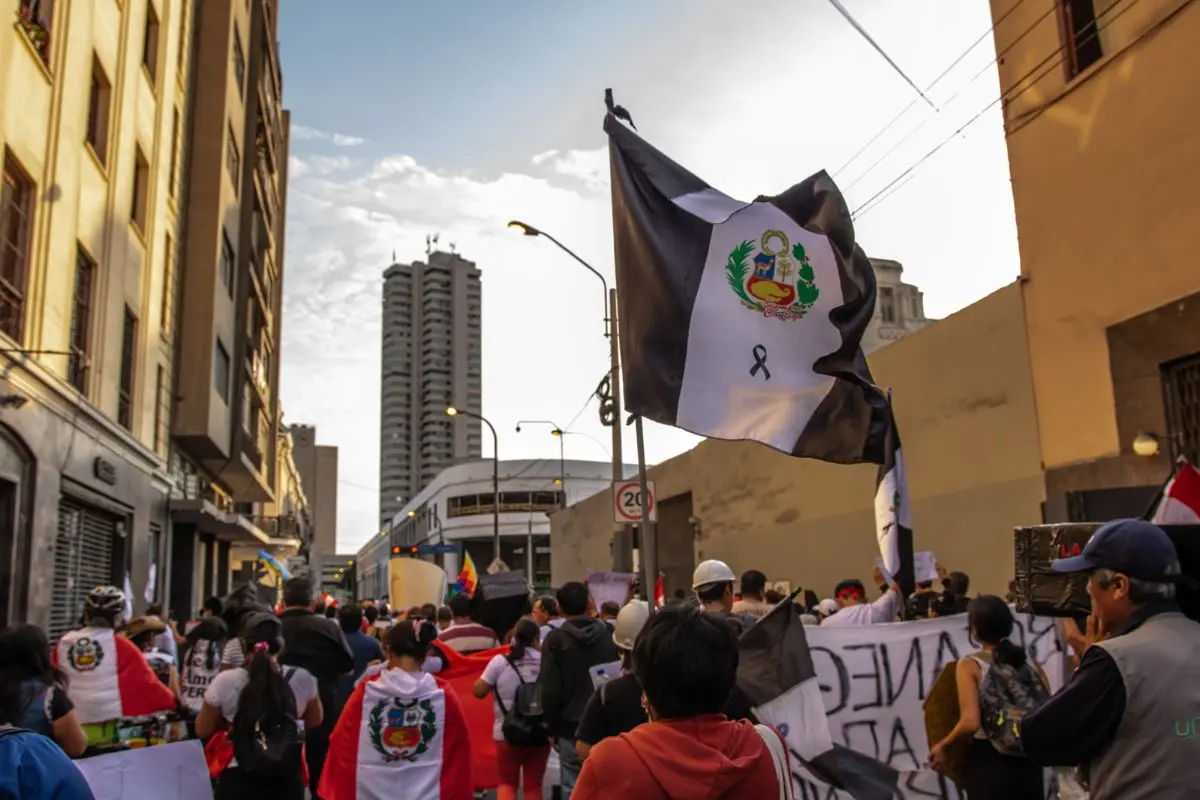Peru: The struggle against the government and Congress returns

By Socialist Workers Party (PST) – Peru
On June 12, the Board of Supreme Prosecutors rejected the Reform project that declared the reorganization of the National Board of Justice and the Public Ministry, and called on citizens to join in the “defense of democracy and the Rule of Law”. Several NGOs and political parties accepted this call, while trade union and popular organizations announced mobilizations against the government and Congress, which opens the possibility for the PST to intervene in the struggle. The situation demands a national plan of struggle on the part of the central organizations that will let the popular will be expressed.
The authoritarian line of the government and Congress began with the impunity for assassinations, the criminalization of social protest, and the shielding of Dina Boluarte and many congressmen. Many believed that they could support the government until 2026, but we have confirmed that the costs are unacceptable and threaten liberties and fundamental rights; the bicameralism and the reelection of congressmen were imposed in a way that contradicted the popular will expressed in the referendum; and the regional political movements were disqualified to reinforce the monopoly the corrupt parties have over political representation.
The pardon of Fujimori was another example of authoritarianism. In addition, Congress is taking over other State institutions in order to ensure at least two of its main and most urgent priorities: 1) Impunity in the criminal trials faced by the leaders of the ruling parties, especially Keyko Fujimori, and 2) Control of the next electoral process to gain advantage and ensure its permanence in power.
The pact of the corrupt endorsed by the bosses
The main parties of Fujimorism and the most right-wing parties as main allies managed to align with other significant political formations, including Peru Libre and Bloque Magisterial, in exchange for minor concessions. This is the so-called “pact of the corrupt” that sustains the government, and they are supported by the business sectors.
In effect, the government of the corrupt is the form that the bosses’ policy has taken to completely capture the management of the State. First there were the isolated attempts of Fujimorism to impose itself on the PPK government and then on Vizcarra, who ended up closing the Congress. Although the new Congress managed to vacate it to impose the usurper government of Merino, which only lasted a week, as it fell under a combative mobilization.
This correlation changed during the electoral process of 2021, when Pedro Castillo passed to the second round with a program and a discourse that threatened some of the foundations of neoliberal rule. On that occasion, the bourgeoisie unloaded its first offensive attack on the candidacy of Pedro Castillo and turned all its support to the indicted Keyko Fujimori, and the result was a defeat for them. The second offensive was against the government of Castillo, first ignoring his victory and then permanently harassing him with attempts to remove him from office.
The third offensive is the one that is currently underway, with the imposition by blood and fire of the Boluarte government without calling for immediate general elections.
Therefore, the objective of the far-right and the bosses that support it is to take control of the “democratic” regime by electoral means, in order to impose a situation that will definitively unblock the mining projects and implement new neoliberal reforms, and a more offensive repression, a script that has already been tested in the 2022-2023 situation.
Back to the streets
Despite the pronouncements of several parties in defense of democracy, there is no concrete plan of action to make the fall of the government effective; their plan is to knock on the doors of international institutions and make appeals to the conscience of the employer sectors that support the pact of the corrupt, and remain focused on their electoral strategy that involves waiting for 2026.
It is key to remember that these sectors, left-wing reformism and center-right, had political control after the fall of the Fujimori dictatorship, and are responsible for having bogged down that revolution and maintaining the 1993 Constitution, which made possible the continuity of the neoliberal plan imposed by the dictatorship. The false belief that this would contribute to the modernization of the State, democratic institutions and the democratic rights of the population, was proven by the vast majority of Peruvians and is precisely the cause of social discontent and the underlying crisis.
The political crisis experienced since 2016, is largely the expression of the failure of that process. And now, in the face of the weakening of those political sectors and the absence of a class alternative, those who have been strengthened by the crisis are the most right-wing sectors. In contrast with that policy, the workers and popular sectors have been promoting the struggle in the streets and have announced their intention to take to the streets as they did in 2000, until they can put an end to the government and the congress. In view of this situation, the political and trade union leaderships have the responsibility to make viable a real national plan of struggle to enforce the will of the people.




